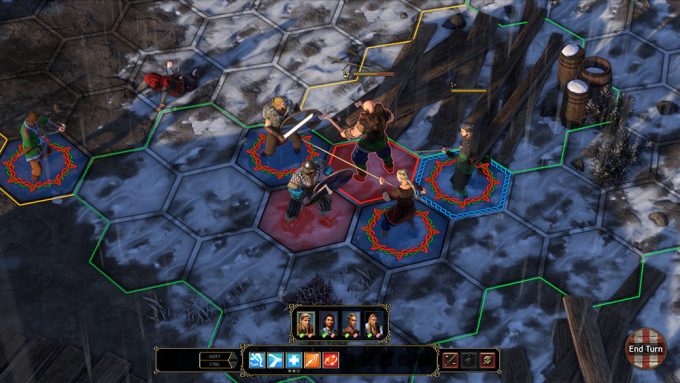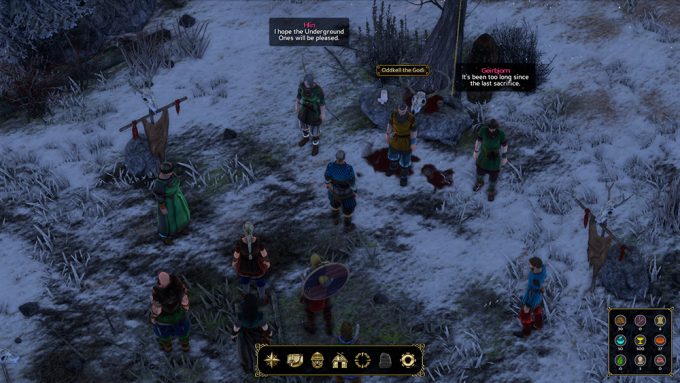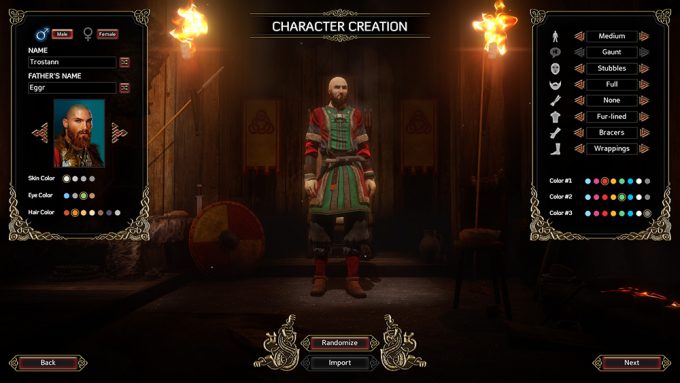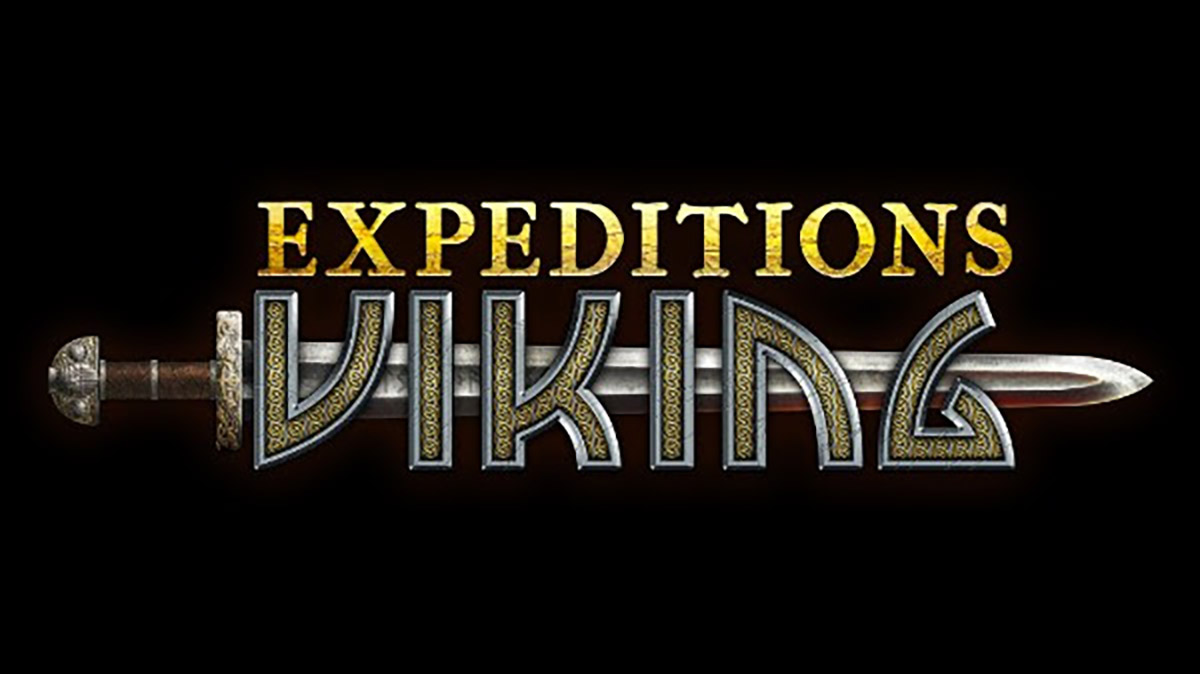
The last stretch in game development is often the most difficult. Big squashing, playtesting, and story finalization all come together in a whirlwind of production. That final shine is painful to go through, but important. When we saw Logic Artists’ Expeditions: Viking last year, it was in the thick of development. The final 12 months have pushed the team to the limits to deliver a tactical RPG that is not only based in history, but also one that meets play expectations as well.
It was hard to understand what that next big step was going to be to get to completion. The game last year looked like it was a release candidate, or very close to one. However, I had only focused my time then on the first half of the game, namely the Denmark campaign, and there was an entire second half to build beyond that. E:V is designed as a sort of two-part experience. In the first, we’re learning about the Viking culture and building up our reputation and team. In the second half we’re cashing in on that, arriving in Britain to expand our society’s reach.
That makes the time I spend with the latest hands-on demo that much more intriguing, as it essentially feels like a pseudo sequel.
The demo kicks off as we land on the shores of the great isles, taking our team of Vikings across realistic and authentic terrain. Because of the early time period, technology hasn’t blossomed much in hundreds of years, and things like bridges across rivers are made of planks and logs instead of stone arches. It’s a different feel than the fantasy-based worlds of similar tactical RPGs, and focuses on accuracy instead of flashiness.
My party consists of five members, each with different strengths and emotions. Expeditions: Viking doesn’t utilize a class system, instead letting players guide and build their characters as they need. However, the characters do have personal goals, and this directly affects how they work together and engage the story. The advantage of being based in historical mythology is two-fold: it lends itself to unique combat styles, and it allows things like magic and mystery to have a solid backbone. One of the aspects I’ve always like about the game is that abilities have basis in the beliefs of these peoples. Healing capabilities aren’t just magic, they’re rooted in how actual mystics and healers functioned in the societies. That makes the believability factor rise, and our strategies and engagements more tactical.
With the Denmark campaign starting us in an established world, jumping to the British regions makes us feel completely foreign. When we encounter a band of villagers along our path, we can neither understand them nor communicate back. It amounts to hand-waving and frustration between the two parties; I imagine this is what it must have been like when first contacts were made. This clash of peoples, cultures, beliefs and traditions must have felt equal parts peculiar and frightening. That “stranger in a strange land” theme is built into this second half.

In Vikings, this initial first contact is relayed as text that neither side can understand, until one of the villagers sends for a monk who has had some light interactions with previous Viking “visitors” and understands communication methods. These situations are what make up the backbone of the game, giving us innumerable choices on how to proceed. In this case, we’re asked if we come peacefully. My available responses include feigning trade desires, alliances, or straight up conquering of the masses. I opt in for trading, as I’m not quite powerful enough to take on so many of the villagers at once. Depending on how we react to these situations, our party members will treat us differently. Stating that I’m there to trade angers one of my warriors, who clearly wants to pillage and rape and grow our strengths. He could later turn his back on me, if I’m not careful. That reputation building we’ve learned about in the game’s first half is put to the test.
Upon meeting with the village’s elder, we discover that the settlement has been attacked by bandits recently, and we’re asked to seek them out and destroy them. To make sure we do so, the elder requires the monk to join our group and keep us in line. There’s a wealthy monastery ahead, you see, and should we decide to take a looting detour we may face the wrath of the town. When we find the bandits, we’re offered the choice of attacking or searching for information. Our monk friend presses us to take them out, but my suspicions have been rising and I prod them for answers. We come to find out that it’s a sort of misunderstanding between the two groups, after a little back and forth discussion. The bandits are actually merchant sailors who have lost their way due to a wayfinding fire in the monastery having been put out. They’ve discovered that the village elder was behind it, as other bandits have used it to hunt for local wealth. The merchants demand reparations, but the village is weary on offering any payment. This can only be deduced from meeting both sides, but isn’t the only way to handle the problem.

Our options include attacking either of the two groups or trying a third method: heading up to the house of worship and taking the wealth ourselves. We choose the latter, as it will give us our first real taste of battle with a reward at the end. This pushes away our monk friend, who’s against the fight and runs to the monastery to warn its tenants. This gives us a path to go, though it prepares our opposition for the battle.
Thankfully, our opposition seems to only be inexperienced nuns who couldn’t stand a chance — and they don’t. As a sort of in-game tutorial, the area lets us understand character movement and battle. One of the biggest changes to the game over the last year is related to battles, as hexagonal movement has been simplified a little and made more accessible. The change involves allowing for slightly less encumbered management of characters, while not altering the dynamic of the game. Battles move swifter and smoother now. For players that do like the older style of hex, an option will be available to revert back to it instead of the newer version. The change is helpful when it comes to managing cover-based enemies. If an adversary is behind a crate or wall, I can either move up to attack from the side or try to draw them out with ranged attacks.
With an easy battle behind me, I can either split the loot with the merchants as promised, or run off with the whole thing. The choice is important towards setting up future alliances in case I need help down the line. Expeditions: Viking is filled with these moments and interwoven threads. After a year of presentation upgrades and polishing, it looks ready to give an energetic history lesson when it launches later in Q2.



No Comments